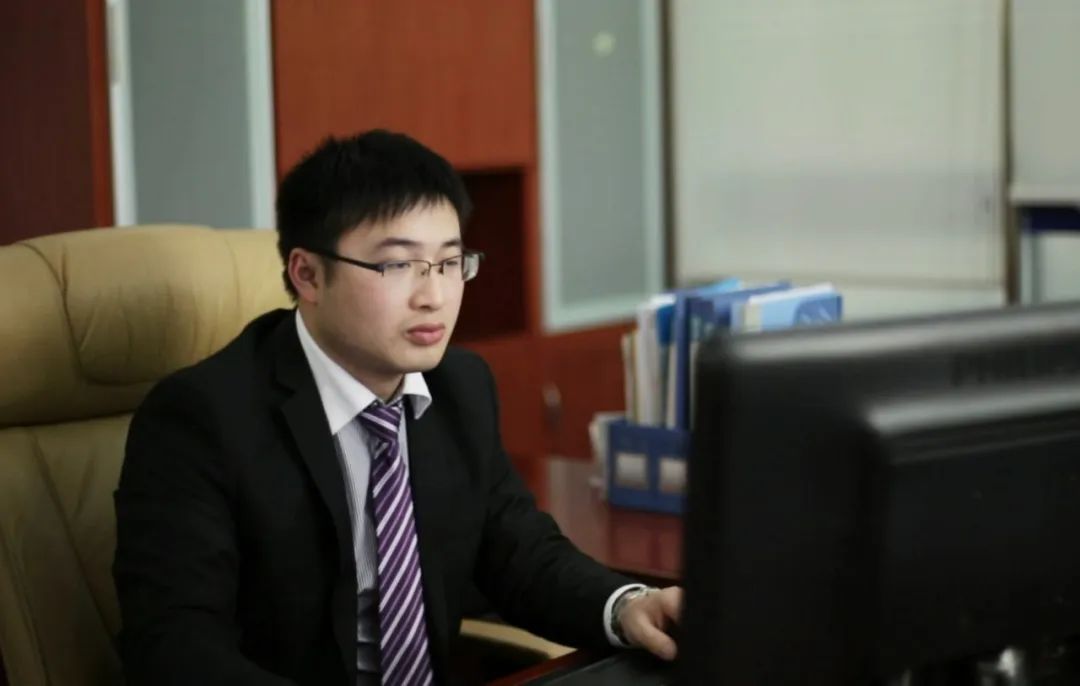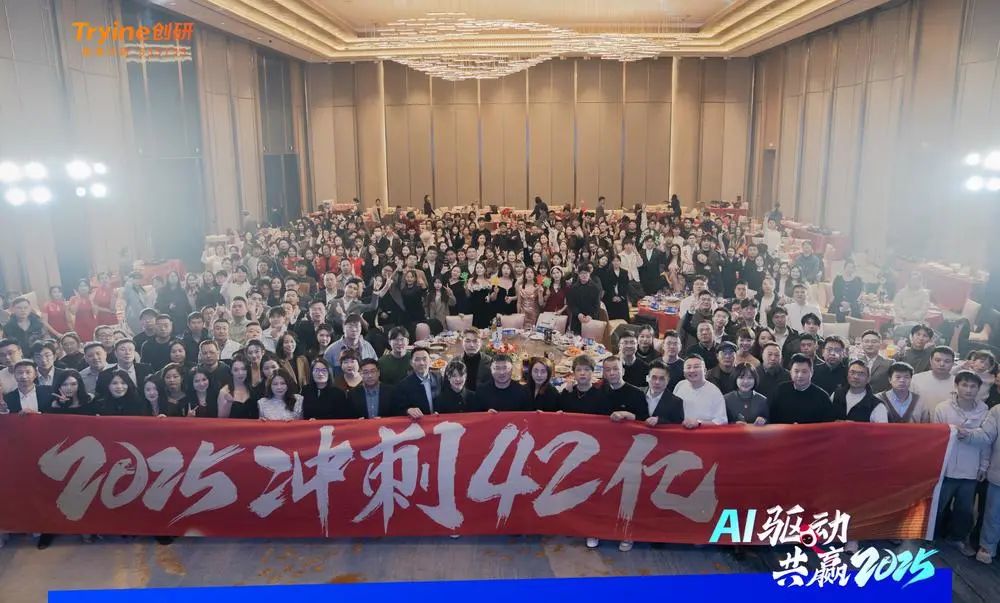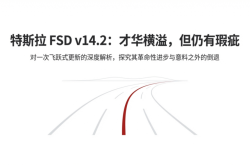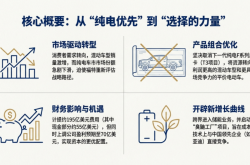Emerging AI Marketing Champion from Hunan: Annual Revenue of 589 Million Yuan, Breaking into National Top 5
![]() 06/04 2025
06/04 2025
![]() 535
535
Large models have been in the spotlight for 2.5 years, and since ChatGPT ignited a global AI frenzy in November 2022, the reconstruction of the 800 billion yuan marketing sector has commenced.
What transformations have occurred between AI and marketing in these 2.5 years? What are the genuine opportunities, and what are the subtle pitfalls? This is an intriguing question.
Today, Pencil News endeavors to uncover this mystery through an interview with Liu Mouqing, the founder of Chuangyan Co., Ltd., the first AI marketing technology company in Hunan.
Listed on the New Third Board in 2016, Chuangyan Co., Ltd. transitioned to AI marketing after 2021, leveraging the benefits of ChatGPT and DeepSeek. By 2025, the company anticipates its revenue to surpass 1 billion yuan. In 2024, the company reported revenue of approximately 589 million yuan, with a net profit of 35.47 million yuan; in 2023, revenue was 413.6 million yuan, with a net profit of 35.62 million yuan.
Chuangyan Co., Ltd. ranks among the top 5 nationally in the e-commerce, education, and healthcare sectors.
In this article, Liu Mouqing will discuss how he has used AI to enhance the two main components of marketing (content and delivery) over the past two years. What are the opportunities and pitfalls in each aspect of marketing?
According to Liu Mouqing, the company is currently seeking funding for better development.
- 01 -
Is AI + marketing a promising sector? It depends on the circumstances.
Liu Mouqing has learned from his experiences in sector selection. If the sector does not align with one's passions and strengths, success is unlikely.

Liu Mouqing, Founder of Chuangyan Co., Ltd.
With over a decade of technical background, Liu Mouqing confidently ventured into the community group-buying sector in 2015, securing tens of millions of yuan in funding. "The scale did grow, but it was a capital game we couldn't sustain," he recalled with a bitter smile. The tens of millions of yuan in funding were insufficient as competitors had hundreds of millions at their disposal. Ultimately, the platform nearly went under, and the investment was wasted. In 2020, Liu Mouqing ceased all sideline businesses and led his team back to the digital marketing sector, clearly defining the boundary: only providing technology-driven services.
- 02 -
A turning point emerged in late 2022 with the debut of ChatGPT, making AI an instant global sensation. Marketing is a vast sector, worth 780 billion yuan domestically in 2024. What kind of transformation can AI bring to this giant sector?
For Liu Mouqing, this was also an experiment.
In retrospect, ChatGPT's impact on marketing was significantly less than that of DeepSeek.
"After ChatGPT's emergence, the competition for large models intensified. But at that time, all models were general-purpose, like a Swiss Army knife, capable of doing everything but proficient in nothing."
More specifically, the then-existing ChatGPT was constrained by inadequate industry data accumulation and insufficient scenario segmentation, unable to customize content production for different platforms like Douyin and Xiaohongshu.
From November 2022 to November 2024, Liu Mouqing's primary experimental direction was using large models to generate content. His team utilized ChatGPT to learn basic skills such as copywriting and content creation.
- 03 -
A more significant opportunity arose in November 2024 with the emergence of DeepSeek, addressing Liu Mouqing's previous concerns. In other words, while ChatGPT couldn't customize, DeepSeek could. It was like an exceptionally elastic rubber, capable of being molded into any desired shape.
AI marketing can be broadly categorized into two aspects: content and delivery. After the launch of DeepSeek, Liu Mouqing promptly tested its application on platforms like Douyin and Tencent for content production and delivery strategy optimization.
Regarding content, he initiated an AI transformation, decomposing top-tier copywriting into four modules: "style positioning - structure building - script generation - platform adaptation," solidifying the process through algorithms.
The results were immediate. Novices could produce 80-point content after two weeks of training, and jobs previously requiring personnel with a monthly salary of over 10,000 yuan (copywriters/video producers) could now be handled by employees earning 4,000 to 5,000 yuan (with the aid of AI tools), significantly reducing labor costs.
He crunched the numbers. Last year, despite expanding its business scale—with revenue of 589 million yuan in 2024 and an expected increase to 1 billion yuan this year—Chuangyan Co., Ltd.'s content team did not grow. "AI tools replaced at least about 30% of the workforce. Especially in jobs like automatically generating video scripts and poster production, the average output efficiency increased by 2-3 times."

- 04 -
Apart from content, for marketing delivery, he developed an "AI monitoring system."
Previous delivery strategies heavily relied on manual adjustments. Taking platforms like Douyin and Kuaishou as examples, parameters needed to be manually set, and real-time market changes could not be predicted, often leading to misjudgments of overall trends due to local data fluctuations: for example, directly stopping ads when prices fell, missing out on subsequent recovery opportunities.
Traditional CPC (Cost Per Click) optimization relies on manual monitoring, and ad operators can handle a maximum of 200 plans per day, making it challenging to cope with the dynamic competition of hundreds of millions of daily flows on Douyin.
With the advent of AI technologies like DeepSeek, Liu Mouqing realized that large models could automate and intelligentize delivery strategies, solving the lag and subjectivity of manual decisions.
Moreover, AI can replicate the abilities of top ad operators, becoming their "avatars" and realizing "AI replacing manual monitoring," thereby enhancing overall ROI (Return On Investment).
Around the beginning of 2025, two to three months after the launch of DeepSeek, he developed the AI monitoring system.
When the effectiveness of a certain advertisement declines, an ordinary system would immediately stop the ad, but the AI system, like an experienced trader, can predict fluctuation cycles based on data trends and maintain positions during trough periods.
Just like stock trading, cutting losses when prices fall will never give you a chance to turn things around.
This algorithm significantly improved ROI.
Taking the Pepsi-authorized cup project as an example, this project belongs to the e-commerce retail sector, with delivery channels primarily being social media platforms like Douyin and Tencent, aiming to increase product sales.
The ROI of traditional delivery has long hovered around 2.5-2.6, meaning that every 1 yuan invested could only bring in 2.5-2.6 yuan in revenue. However, after the AI delivery system took over, the ROI increased to 2.9-3.0. Don't underestimate this 0.4 difference; in the e-commerce industry, it translates to millions of yuan in net profit.
This 0.4 increase in ROI is not just a simple numerical change but a paradigm shift from "experience-driven" to "data intelligence-driven": by capturing subtle market fluctuations through DeepSeek algorithms, avoiding the emotionality and lag of manual decisions, and ultimately finding incremental value in the "traffic-conversion-profit" chain.
- 05 -
These incremental values even led Chuangyan Co., Ltd. to upgrade its profit model.
Previously, the revenue model was relatively straightforward: charging a service fee based on a fixed percentage of the client's delivery budget (such as 5%-8%). For example, if a client's monthly delivery budget was 2 million yuan, Chuangyan Co., Ltd. would charge a service fee of 100,000 to 160,000 yuan, with revenue directly linked to budget size.
However, this year, he began exploring results-based revenue sharing + commissions: shifting from selling services to selling results.
This is a relatively new concept, namely RAAS: Results-as-a-Service. In early March of this year, Peng Zhiqiang, Chairman of Shengjing Netunion, also proposed this concept, emphasizing that AI applications can directly deliver quantifiable business results rather than providing tools or intermediate products.
And at the Sequoia AI Summit in May 2025, Partner Pat Grady also put forward a similar concept: the next wave of AI will not sell tools but rather outcomes (Outcome-oriented), highly consistent with the concept of AI RaaS.
How does Liu Mouqing implement the RAAS concept? For example, an ROI of 2.2 is agreed upon with clients, and commissions are drawn from the saved delivery costs or newly generated revenue on a pro-rata basis.
For instance, if a client's monthly budget is 2 million yuan, assuming 100% budget completion with a baseline ROI of 2.2 (corresponding to revenue of 4.4 million yuan), and the actual ROI reaches 2.5 (revenue of 5 million yuan), out of the newly generated 600,000 yuan in revenue, Chuangyan Co., Ltd. draws 50% (i.e., 300,000 yuan), with the client retaining 50% (300,000 yuan).
- 06 -
Of course, AI + marketing is not a niche sector; competition is fierce. There are both large technology companies and startups focused on the development of AI marketing tools. Liu Mouqing estimates that if calculated by turnover, "there are cumulatively thousands of players, large and small."
Compared to competitors, Chuangyan Co., Ltd. focuses on three sectors: e-commerce, education, and healthcare. In these three sectors, there are estimated to be dozens of mid-to-upper-tier players, with Chuangyan Co., Ltd. ranking among the top in terms of revenue and net profit. Additionally, the AI sector is fraught with many subtle pitfalls. He analyzes the five major segments of the current AI marketing field one by one: some are favored, while others are not.
The first aspect is digital humans, which Liu Mouqing bluntly states have a ceiling that is difficult to break through.
Such digital humans not only lack natural emotional interaction but also face numerous restrictions from platform ecosystems. Taking Douyin as an example, it is not friendly to them, and their development space is extremely limited.
Regarding AI design tools, he points out that tools like Meitu can indeed improve work efficiency to a certain extent but have always struggled to touch the core of marketing effectiveness and can only exist as auxiliary means.
The development prospects for AI writing platforms are also not promising. The general copywriting market has long been firmly occupied by large companies, and only by deeply cultivating vertical scenarios can one find a glimmer of hope for survival.
Advertising exchange platforms require even more cautious judgment; if not tightly bound to performance-based payments, everything is just empty talk.
As for telemarketing robots, their effectiveness in practical applications is concerning, often being hung up on as soon as the call is connected, far inferior to the practical and effective private domain tools within the WeChat enterprise ecosystem.
Where does the future of Chuangyan Co., Ltd. lie? There are several key directions.
One is to continue AI upgrades, such as content production, data decision-making, and intelligent monitoring. The intelligence of large models will continue to increase, and AI upgrades are endless.
Secondly, in the future, AI marketing SaaS tools will be made available to small and medium-sized enterprises, helping them obtain "top ad operator avatars" at a low cost.
Chuangyan Co., Ltd. has confirmed that the information in the article is true and accurate, and Pencil News is willing to endorse its content.






